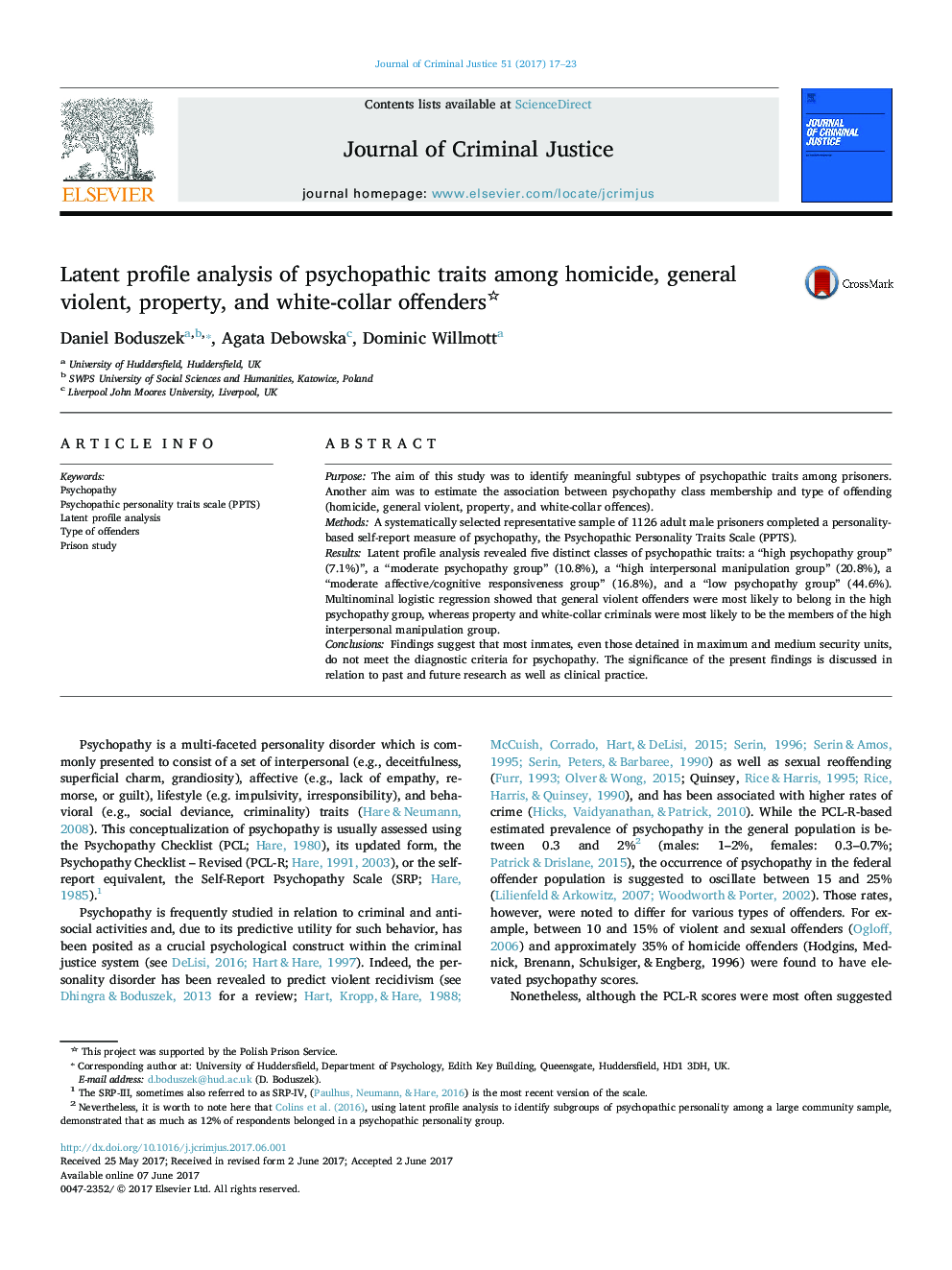| کد مقاله | کد نشریه | سال انتشار | مقاله انگلیسی | نسخه تمام متن |
|---|---|---|---|---|
| 5034366 | 1471582 | 2017 | 7 صفحه PDF | دانلود رایگان |
- Latent profile analysis of psychopathic traits was conducted.
- A large systematic sample of inmates from 10 prisons was used.
- Five latent classes of psychopathic traits were identified.
- Psychopathy classes associated differently with various types of offending.
PurposeThe aim of this study was to identify meaningful subtypes of psychopathic traits among prisoners. Another aim was to estimate the association between psychopathy class membership and type of offending (homicide, general violent, property, and white-collar offences).MethodsA systematically selected representative sample of 1126 adult male prisoners completed a personality-based self-report measure of psychopathy, the Psychopathic Personality Traits Scale (PPTS).ResultsLatent profile analysis revealed five distinct classes of psychopathic traits: a “high psychopathy group” (7.1%)”, a “moderate psychopathy group” (10.8%), a “high interpersonal manipulation group” (20.8%), a “moderate affective/cognitive responsiveness group” (16.8%), and a “low psychopathy group” (44.6%). Multinominal logistic regression showed that general violent offenders were most likely to belong in the high psychopathy group, whereas property and white-collar criminals were most likely to be the members of the high interpersonal manipulation group.ConclusionsFindings suggest that most inmates, even those detained in maximum and medium security units, do not meet the diagnostic criteria for psychopathy. The significance of the present findings is discussed in relation to past and future research as well as clinical practice.
Journal: Journal of Criminal Justice - Volume 51, July 2017, Pages 17-23
